I admit I’m an espalier novice. When I first saw an espalier tree (I’m guessing on “Gardener’s World” or in a British gardening magazine), I thought I had stumbled upon some great European secret. Silly me. Espalier is happening everywhere, and it’s definitely growing in popularity in North America.
And why wouldn’t it? It’s beautiful, but it is also a great way to get excellent fruit production, particularly if you garden in a small space.
For those yet to fall in love with espalier—and I think I can guarantee that you will—it’s simply a method of growing something in a two-dimensional plane. Fruit trees are the most common espaliers, their branches trained and pruned to grow on a flat plane rather than a typical tree shape.
My first real espalier tree was the Asian pear I planted along the fireplace a few years ago. (There was a somewhat sad attempt I made with an apple tree whip before that but I planted it in an area that is now heavily shaded and it’s not doing well.) I was inspired by an Asian pear growing on Margaret Roach’s house.
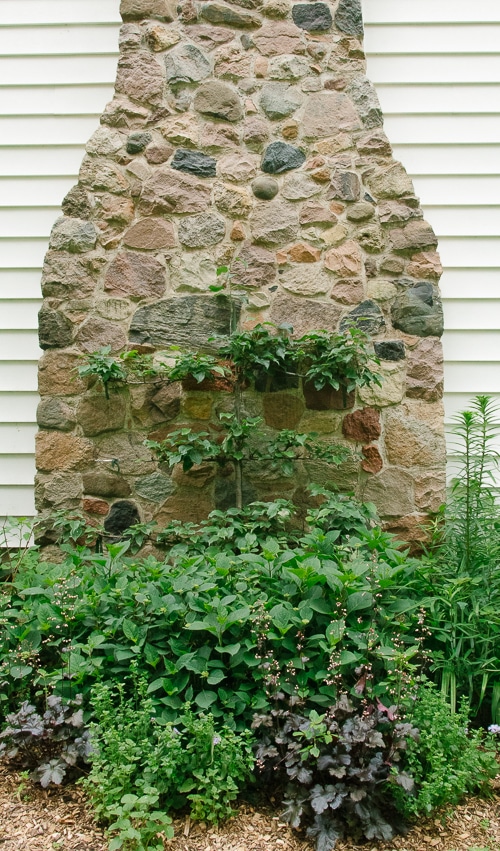
It looks beautiful and adds what I think is the perfect structure in that area, a place where I struggled to find the right thing for many years. It is not at all productive, in part because it requires a pollinator and up until this spring, it didn’t have one.
The new vegetable garden was an excellent opportunity to really dig into my espalier fascination. I added a ‘Liberty’ apple on one side, chosen for its disease resistance. Opposite that I planted a ‘Bartlet’ pear, which should be a good pollinator for the Asian pear.
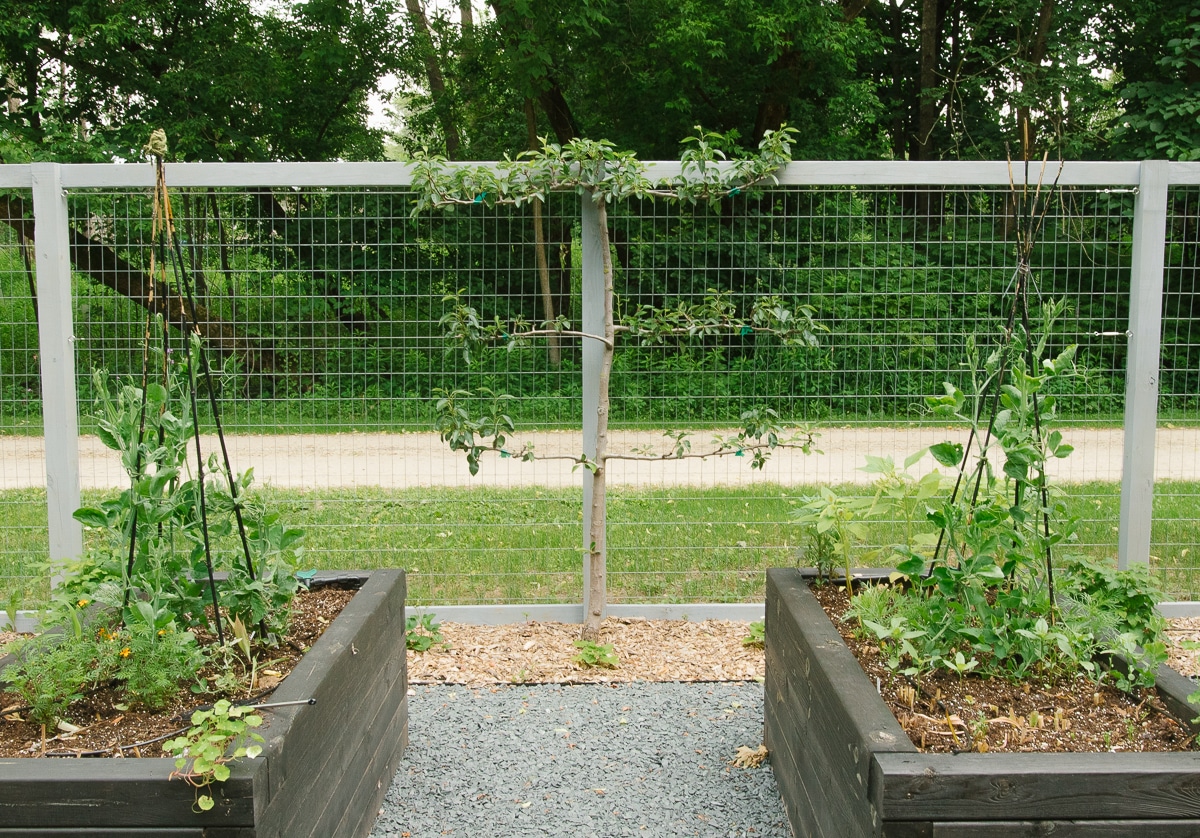
Not content to stop there, I’ve also planted currants, which I’m growing as a single stem up to a guidewire (the same one used for the bottom tier of the trees), where I’ll top it and all it to stretch out its arms along the wire. It’s an espalier currant, an idea inspired by Lee Reich.
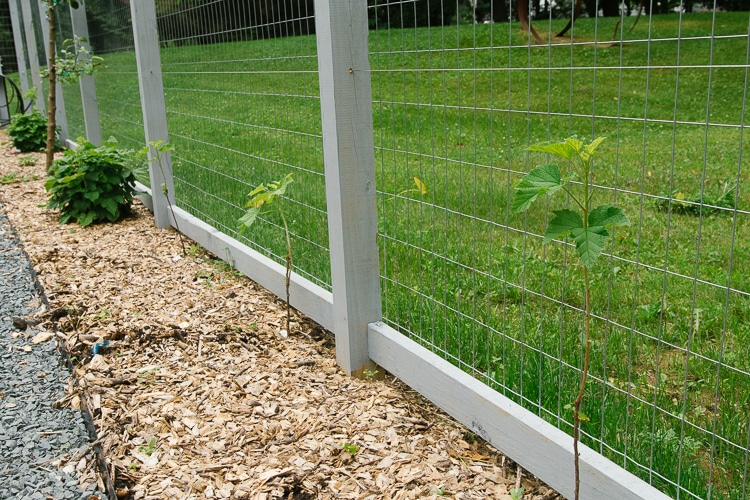
I’m planning to grow a Belgian fence—espalier trees trained into overlapping V shapes that create a diamond pattern—along the back of the fence. While I bought pre-trained espalier trees for the sides, it looks like I’m going to be on my own for the Belgian fence, as few nurseries have heard of them or sell them.
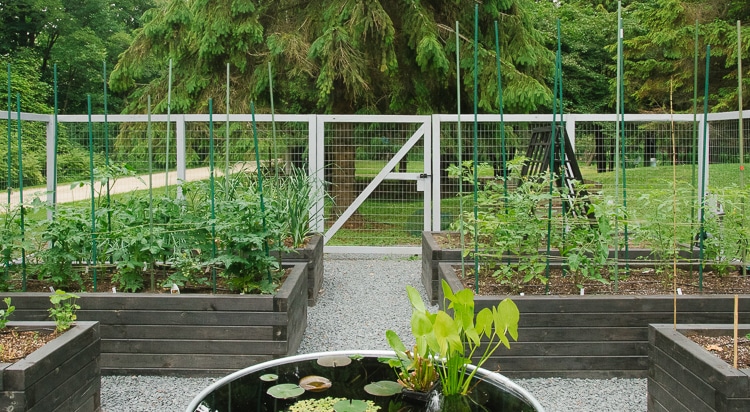
I’m not generally very patient when it comes to getting the look I want in a garden, but there’s an upside to starting from scratch on this. If I were to buy pre-trained trees not only would they be incredibly expensive, but I’d have very few varieties to choose from. Since I don’t necessarily need a ton of fruit, I’m thinking I may use crabapples for the fence and go for a great flower show.
In order to start the fence, I’ll need about a dozen sturdy tree whips (essentially small, unbranched trees). After planting, I’ll top them all at about 2 feet high, or wherever I decide I want the Vs to start. I can guarantee you this gut-wrenching procedure will occur after a lengthy cocktail hour. From there, I’ll tie the new shoots into support stakes to make them grow at the correct angle.
Sidenote: If you happen to know of a source where I could find a selection of crabapple whips, please let me know.
Fruit trees and even crabapple trees are pretty typical for espalier use, but as I discovered at Chanticleer Garden and Longwood Gardens, there’s no need to be limited by variety. I think almost any tree or vine could be pruned in an espalier fashion, as evidenced below.
This evergreen spruce at Longwood Gardens was a sight to behold.
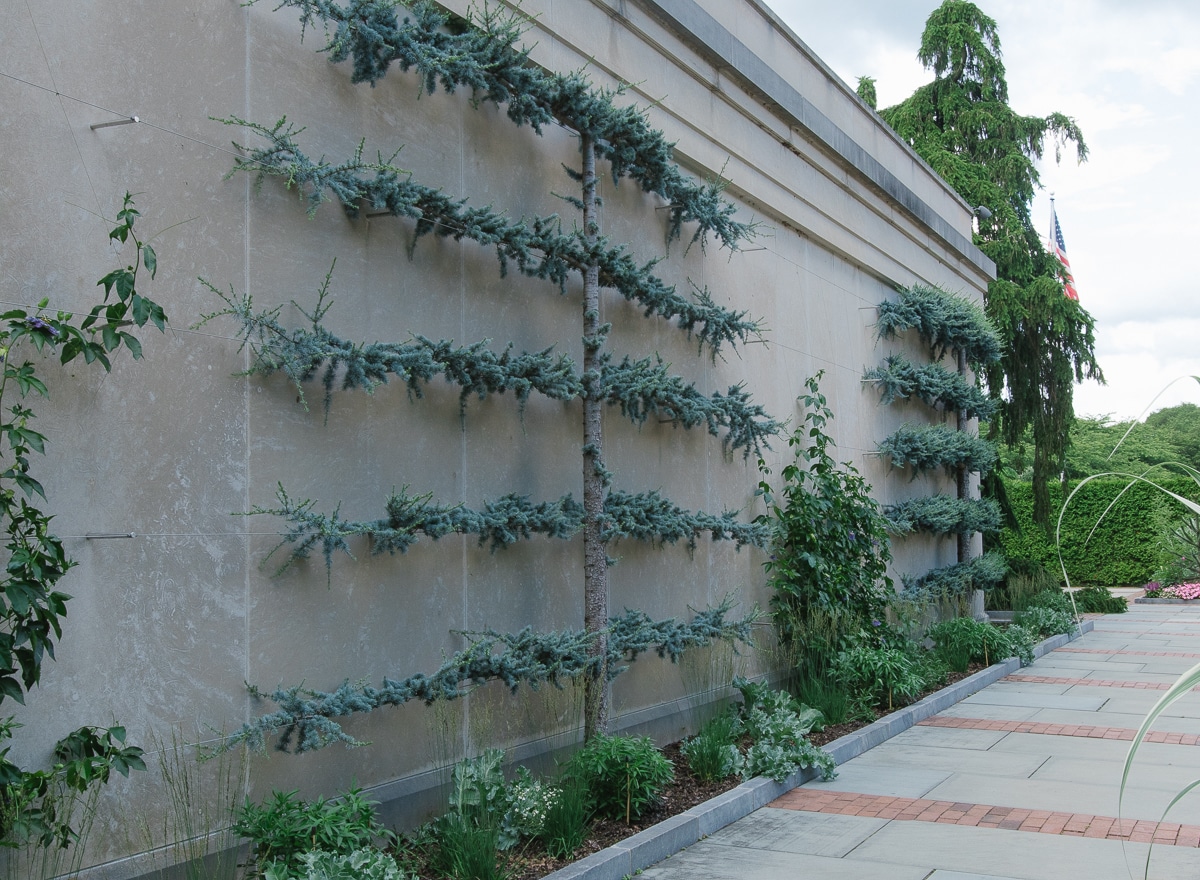
Espaliers were everywhere at Chanticleer. Some took on a more natural look. Although that seems like an oxymoron, it was quite lovely.
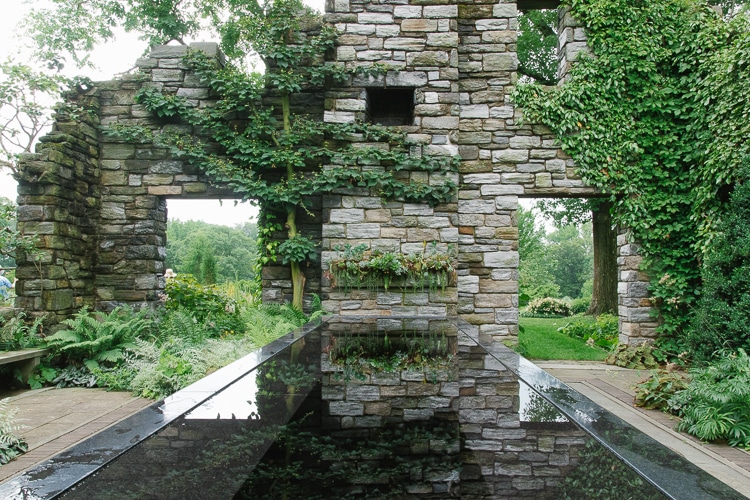
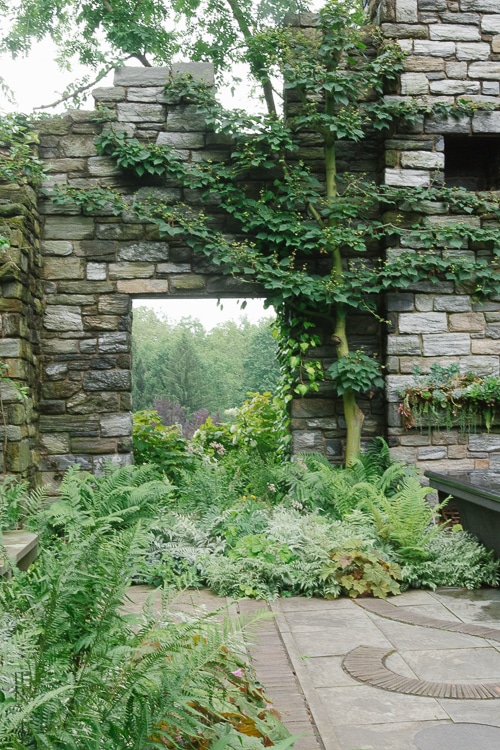
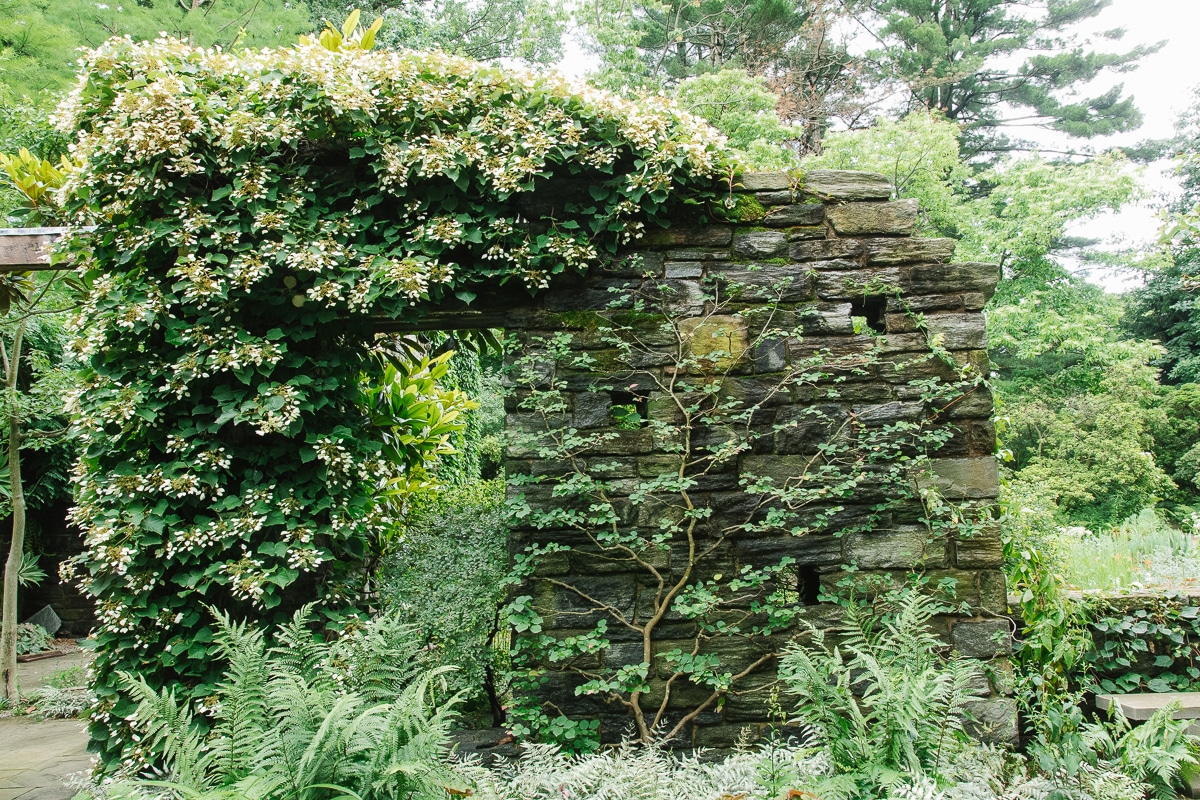
This one had very little foliage but the framework of the tree was so beautiful.
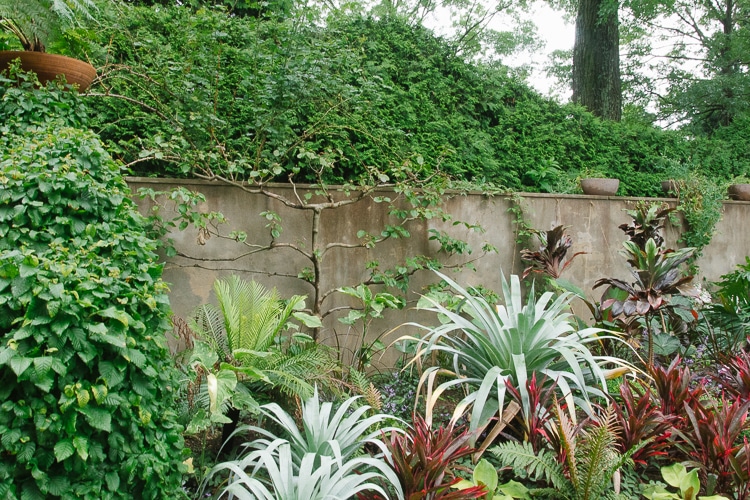
Here’s a different take on espalier: A tree growing a bit like a vine.
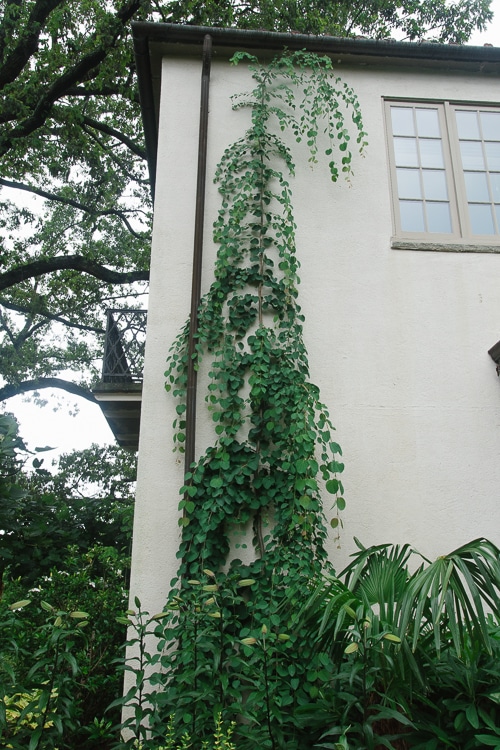
And at Stoneleigh, a relatively new public garden, I found this beautiful informal redbud espaliered on a lovely stone foundation.
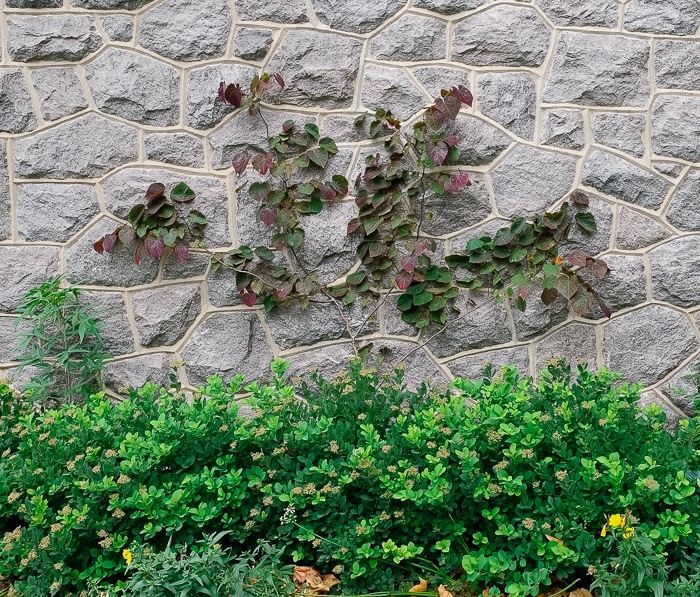
Are you an espalier fan yet?

14 Responses
Landscaping Service:
We also Provide The Best Landscaping service in Dubai.
Love it! Espalier is beautiful!
Beautiful! Wondering … we have a redbud tree that has two other saplings (?) that are growing along our block fence. The saplings are two feet apart and only two feet tall. I’d like to espalier them to the block fence but a friend says that the root system will do damage to the fence. Wouldn’t the root system be smaller given that the espaliered tree be smaller too? The block fence is about ten feet from our home with a sidewalk in-between. I want to only grow plants along the wall. I hope this makes sense! Thank you!!
Perfect espaliers! Your vegetable nursery is genuinely heavenly! Your arranged increments will take it over the top. Bravo! Thank you for sharing this.
I started an apple Belgian fence two years ago! We put up a forty foot long six foot high cable fence and I bought 30 whips grafted on to dwarf root stock (four different varieties, and I made sure that they weren’t too closely related for pollination and to hedge against disease). I planted them and most of them survived (I over-planted figuring that some would die). I let the branches grow to the next wire (about 16″) each year, which is slow, but I’m a patient gardener.
The fence is visible from the street, so I plant a lot of flowers (dahlia, gladiolus, moon vine, love lies bleeding, stokesia, sedum, aster ‘purple dome’). It looks fantastic and it doesn’t seem to bother the small apple trees. I could probably get a few apples next year, but I think I will wait until the branches reach the top.
I am planning to espalier some fruit trees this next year. The problem for me is the fence to put them on. I am inspired by your fencing and trying to figure out how I might tweak it for my purposes. Thanks for sharing.
I too am in love with espalier. I live in the southeast and started a Camelia Sasanqua “Winters Snowman” this year behind my new greenhouse. They are just plain regal! Your vegetable garden is truly divine! Your planned additions will take it over the top. Bravo!
Wish you all the best with the Spalier.??????
I was so delighted that my beloved old Asian pear espalier caught your eye and inspired you. A true four-season treasure, even beautiful “naked” in winter. : ) Thanks for the mention.
What fun!! I can’t wait to see how that fence comes out! I have been interested in espaliered fruit trees for some time, just haven’t bit the bullet on any….I shall garden vicariously through you!
Gorgeous espaliers! You couldn’t have found a more perfect spot for that Asian pear.
Would Jung’s bare root work for crabapple whips next spring? I find that most of their bare roots remain unbranched the first season and they always perform beautifully. May have a limited selection though…
Oh yes I love espalier anything. I just don’t have a wall to attach anything to. Seeing all of your ideas here makes me want a wall even more than I have wanted one before! I can;t wait to see if your Asian pear makes fruit!!